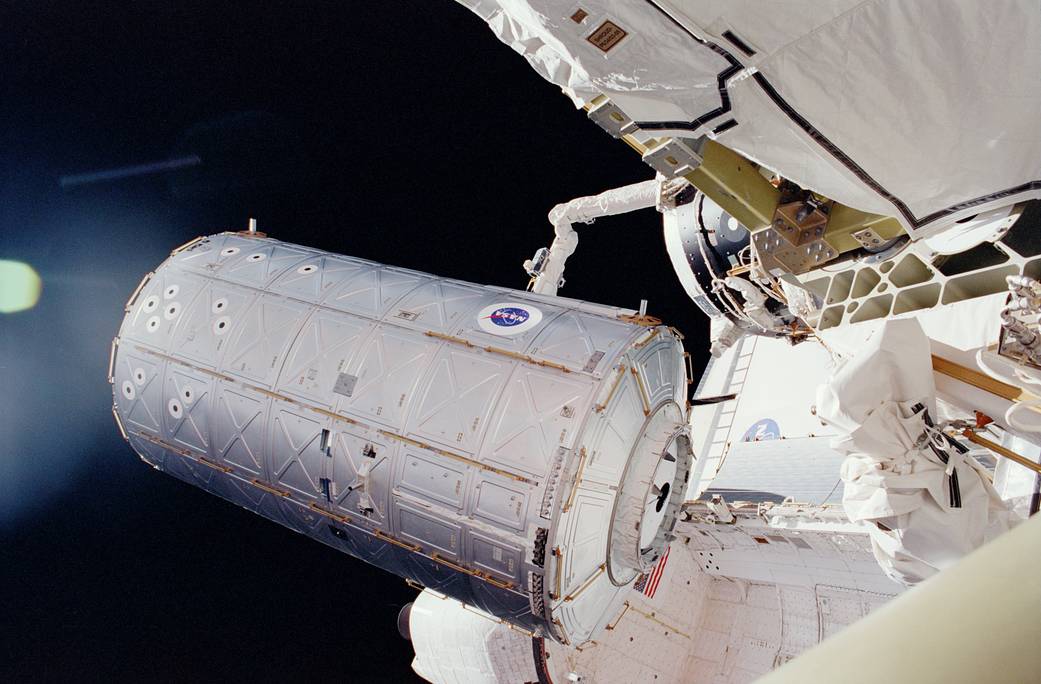On Feb. 10, 2001, the crews of the Space Shuttle Atlantis and the International Space Station successfully installed the U.S. Destiny Laboratory onto the station. In this photo, Destiny is moved by the shuttle’s remote manipulator system (RMS) robot arm from its stowage position in the cargo bay of the Space Shuttle Atlantis. Astronaut Marsha Ivins began the work, using Atlantis’ robotic arm to remove a station docking port, called Pressurized Mating Adapter 2 (PMA 2), to make room for Destiny. The adapter was removed from the station’s Unity module and latched in a temporary position on the station’s truss. Then, at 9:50 a.m. CST, astronauts Tom Jones and Bob Curbeam began a spacewalk that continued throughout the day, in tandem with Ivin’s robotic arm work. Jones provided Ivins visual cues as she moved the adapter to its temporary position, and Curbeam removed protective launch covers and disconnected power and cooling cables between the Destiny lab and Atlantis. At 12:57 p.m., the lab was latched into position on the station, and soon a set of automatic bolts tightened to hold it permanently in place for years of space research. The lab added 3,800 cubic feet of volume to the station, increasing the onboard living space by 41 percent.
The 2005 NASA Authorization Act designated the U.S segment of the space station as a national laboratory. As the nation’s only national laboratory on-orbit, the space station National Lab will improve life on Earth, foster relationships among NASA, other federal entities, and the private sector, and advance science, technology, engineering and mathematics (STEM) education through utilization of the space station’s unique capabilities as a permanent microgravity platform with exposure to the space environment.
> Read more about research and technology aboard the International Space Station
Image Credit: NASA
























